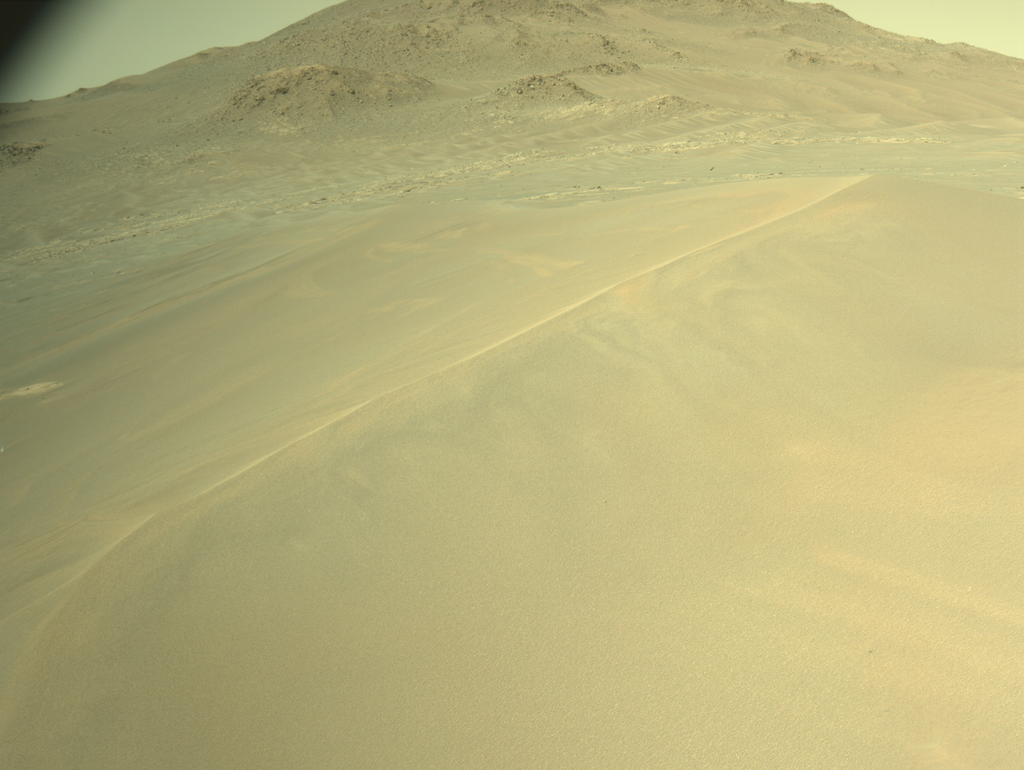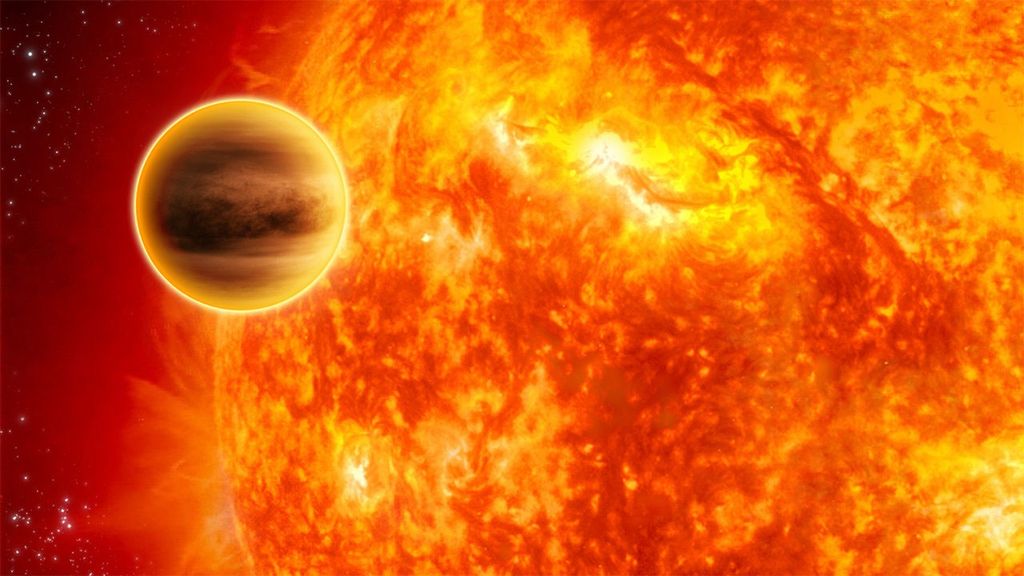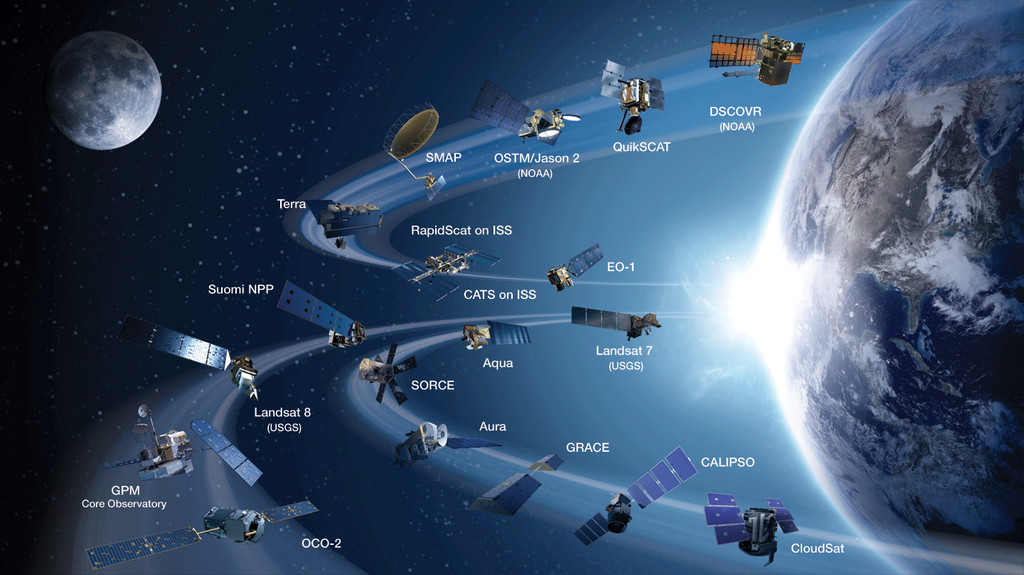1 min read
Cosmic Cliffs in the Carina Nebula Sonifications (NIRCam Image)
New sonifications map a near-infrared image of the Cosmic Cliffs in the Carina Nebula, captured by NASA’s Webb Telescope, to a symphony of sounds. Musicians assigned unique notes to the semi-transparent, gauzy regions and very dense areas of gas and dust in the nebula, culminating in a buzzing soundscape.
The sonification scans the image from left to right. The new sounds were also adapted to a video, allowing sighted viewers to watch as a vertical line moves across the frame.
The soundtrack is vibrant and full, representing the detail in this gigantic, gaseous cavity that has the appearance of a mountain range. The Carina Nebula is a large cloud of gas and dust where stars are forming or have already formed.
The gas and dust in the top half of the image are represented in blue hues and windy, drone-like sounds. The bottom half of the image, represented in ruddy shades of orange and red, has a clearer, more melodic composition.
Brighter light in the image is louder. The vertical position of light also dictates the frequency of sound. For example, bright light near the top of the image sounds loud and high, but bright light near the middle is loud and lower pitched. Dimmer, dust-obscured areas that appear lower in the image are represented by lower frequencies and clearer, undistorted notes.
The separate tracks at left more easily pick out the meandering melodic line that represents the nebula’s “mountain range” as it rises and falls in the image, through the center of the frame, from left to right. This jagged line between denser and thinner areas of gas and dust is the arc of the sonification’s melody. All stars are represented by a combination of pitches and processed piano notes, but the brightest stars with longer diffraction spikes also carry crashes and clangs from cymbals.
Several files appear at left for download: The first represents the entire image. The second only includes sounds from the top portion of the image, and the third file only includes sounds from the bottom half of the image. Listen to the second and third files to discern the “mountain top” feature in the image. A fourth file only plays the notes that represent stars. Listen to all of the tracks for a more complex understanding of how sounds were adapted to Webb’s image of the Cosmic Cliffs.
This sonification does not represent sounds recorded in space. Two musicians mapped the telescope’s data to sound, carefully composing music to accurately represent details the team would like listeners to focus on. In a way, this sonification is like modern dance or an impressionist painting – it converts Webb’s image to a new medium to engage and inspire listeners.
Explore Webb’s image of the Cosmic Cliffs, including its full text description, in more detail.
- Release DateAugust 31, 2022
- Science ReleaseNASA Webb’s First Full Color Images, Data Are Set to Sound
- CreditImage: NASA, ESA, CSA, STScI; Accessibility Production: NASA, ESA, CSA, STScI, Kimberly Arcand (CXC, SAO), Matt Russo (SYSTEM Sounds), Andrew Santaguida (SYSTEM Sounds), Quyen Hart (STScI), Claire Blome (STScI), Christine Malec
Downloads
Related Images & Videos
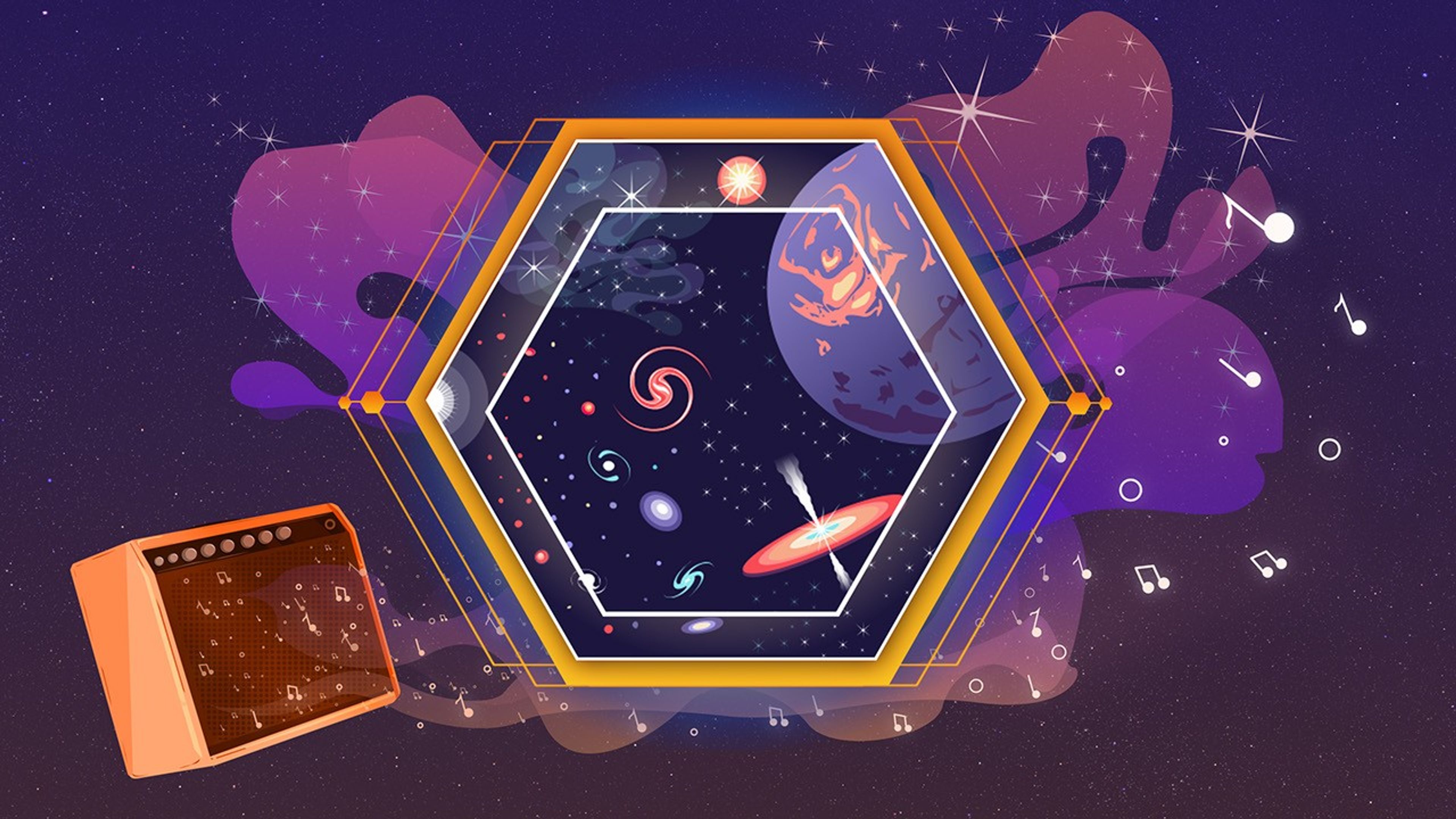
James Webb Space Telescope Sonifications
Explore some of the first full-color infrared images and data from NASA’s James Webb Space Telescope – by listening. Enter the complex soundscape of the Cosmic Cliffs in the Carina Nebula, explore the contrasting tones of two images that depict the Southern Ring Nebula , and...
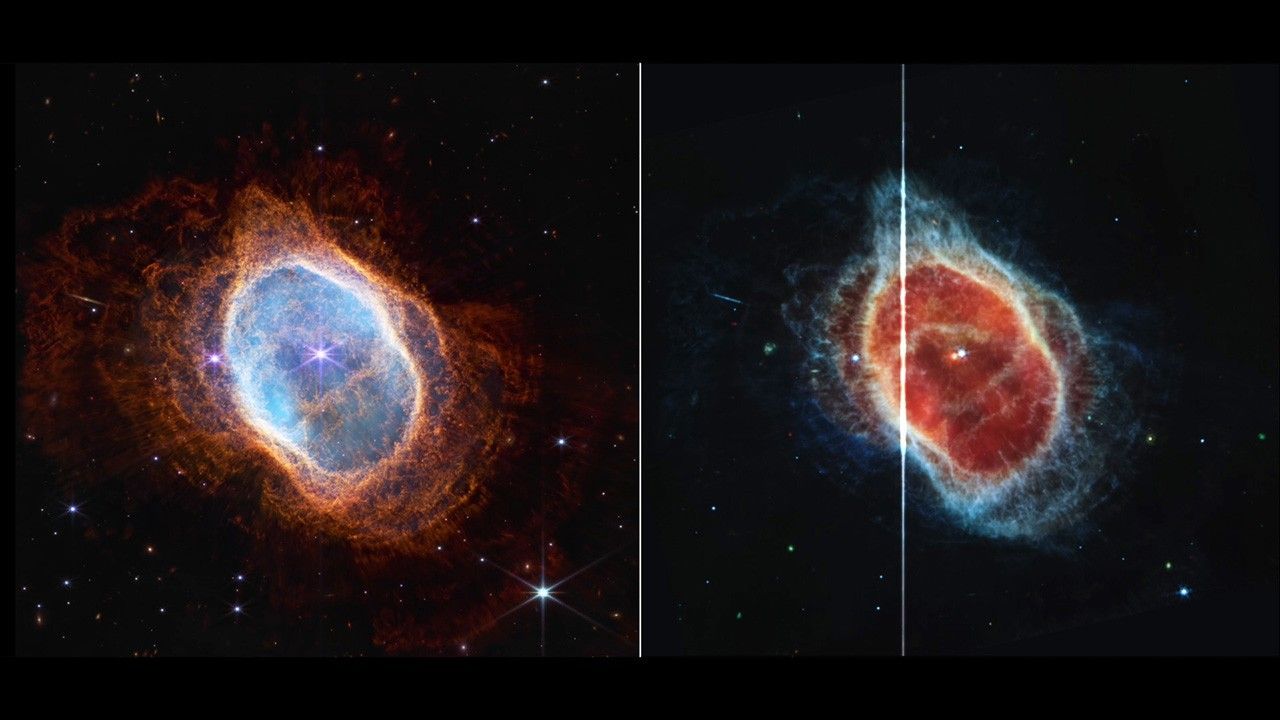
Southern Ring Nebula Sonifications (NIRCam and MIRI Images Side by Side)
NASA’s Webb Telescope uncovered two views of the Southern Ring Nebula – in near-infrared light (at left) and mid-infrared light (at right) – and each has been adapted to sound. Two stars orbit one another at the center of this planetary nebula. The smaller, fainter red star in...
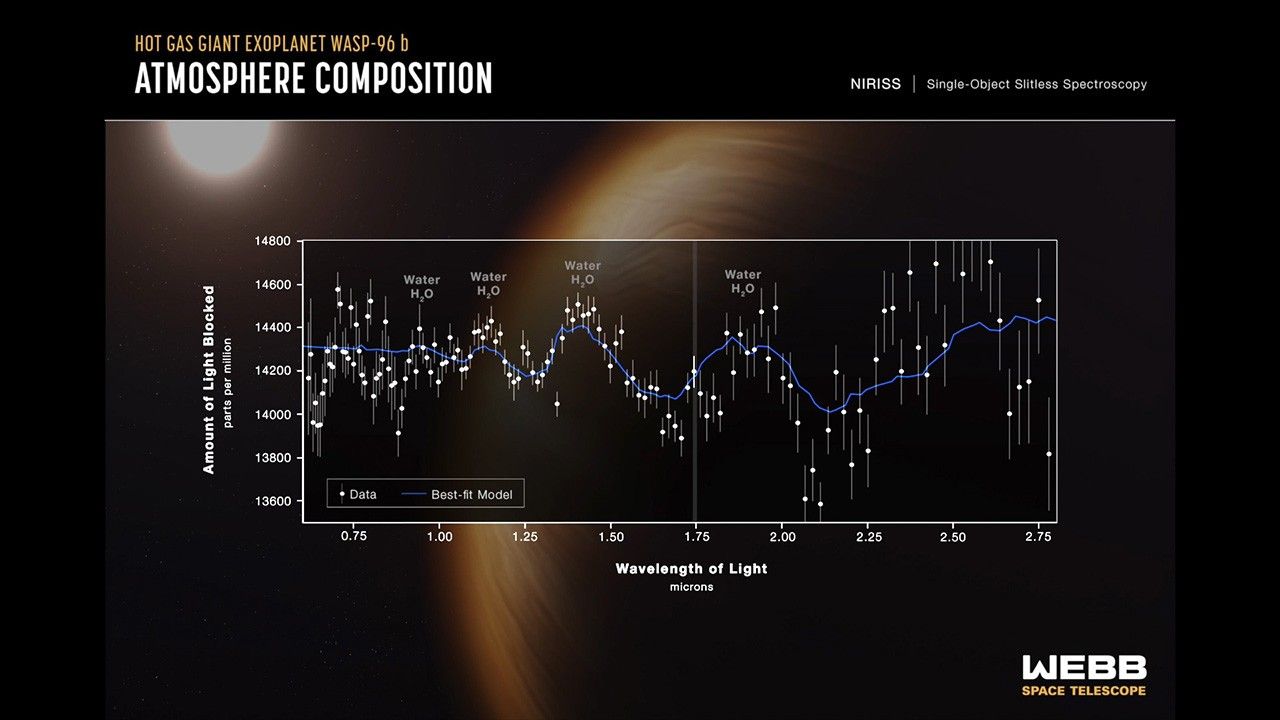
Exoplanet WASP-96 b Sonification (NIRISS Transmission Spectrum)
NASA’s Webb Telescope observed the atmospheric characteristics of the hot gas giant exoplanet WASP-96 b – which contains clear signatures of water – and the resulting transmission spectrum’s individual data points were translated into sound. The sonification scans the spectrum...
Share
Details
Laura Betz
NASA’s Goddard Space Flight Center
Greenbelt, Maryland
laura.e.betz@nasa.gov
NASA, ESA, CSA, STScI
NASA, ESA, CSA, STScI, Kimberly Arcand (CXC, SAO), Matt Russo (SYSTEM Sounds), Andrew Santaguida (SYSTEM Sounds), Quyen Hart (STScI), Claire Blome (STScI), Christine Malec



